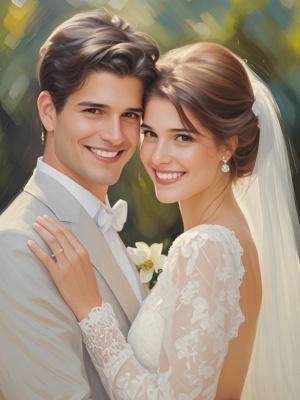The Art and Technique of Portrait Oil Painting
Portrait oil painting is a timeless art form that captures the essence of human expression with rich textures and vibrant colors. Whether you're an aspiring artist or an art enthusiast, understanding the nuances of portrait oil can elevate your appreciation for this classical medium. This article explores the history, techniques, and modern applications of portrait oil painting, offering valuable insights for both beginners and seasoned artists.
The History of Portrait Oil Painting
The tradition of portrait oil painting dates back to the Renaissance period, when masters like Leonardo da Vinci and Rembrandt revolutionized the art world. Oil paints, known for their versatility and durability, became the preferred medium for capturing lifelike portraits. Unlike watercolors or tempera, oils allow for gradual blending and layering, creating depth and realism that other mediums struggle to achieve.
Today, portrait oil painting continues to thrive, blending classical techniques with modern innovations. For those interested in exploring this art form further, our AI Painting Guide offers contemporary insights into digital alternatives.
Essential Techniques for Portrait Oil Painting
1. Underpainting and Composition
Every great portrait begins with a solid foundation. Artists typically start with an underpainting—a monochromatic sketch that establishes values and composition. This step is crucial for ensuring proper proportions and lighting before adding color layers.
2. Layering and Glazing
Oil painting's magic lies in its layering potential. Artists build up portraits through multiple transparent glazes, allowing underlying colors to subtly influence the final result. This technique creates the luminous skin tones and depth characteristic of master portraits.
3. Brushwork and Texture
The variety of brushstrokes in portrait oil painting contributes to its expressive quality. From smooth blended areas to impasto textures, each stroke conveys emotion and personality. Modern artists can explore digital alternatives through our Image to Image transformation tools.
Common Challenges and Solutions
Even experienced artists face obstacles when working with portrait oils. Here's a problem-solution matrix for common issues:
- Problem: Colors appearing muddy
- Solution: Allow proper drying time between layers and limit color mixing to three pigments
- Problem: Difficulty capturing likeness
- Solution: Focus on proportional measurements and key facial landmarks before detailing
- Problem: Drying time too slow
- Solution: Use fast-drying mediums or alkyd-based oils for quicker results
Modern Applications and Digital Alternatives
While traditional portrait oil painting remains popular, digital tools have opened new creative possibilities. AI-powered platforms can transform photographs into oil-style portraits, offering a contemporary twist on this classical art form. For those interested in experimenting with these technologies, our Face Swap feature provides an accessible entry point.
According to experts at the Tate Museum, the fusion of traditional and digital techniques represents the future of portrait art. This hybrid approach allows artists to combine the tactile quality of oils with the flexibility of digital editing.
Conclusion: The Enduring Appeal of Portrait Oils
Portrait oil painting continues to captivate artists and audiences alike with its rich history and expressive potential. Whether created with traditional brushes or modern digital tools, oil-style portraits offer a unique way to preserve memories and celebrate human beauty. For those inspired to create their own portraits, whether through classical methods or AI-assisted techniques, the journey promises both challenge and profound artistic satisfaction.
To explore more about transforming photographs into artistic portraits, visit our Gallery for inspiring examples and creative ideas.
